Are you a vlogger looking to take your content to the next level? Then you know that having the right equipment is crucial for producing high-quality videos. But have you ever stopped to consider the importance of a memory card in your vlogging setup? If not, you may be missing out on optimizing your vlogging performance.
Choosing the best memory card for vlogging can make a significant difference in the quality and storage of your videos. With the right memory card, you can ensure smooth video recording, seamless playback, and efficient editing workflows. But how do you know which memory card is the best for your vlogging needs?
In this comprehensive guide, we will explore the world of memory cards for vlogging. From understanding video quality and storage needs to deciphering write speeds and capacity requirements, we’ll cover everything you need to know to make an informed decision. Get ready to enhance your vlogging adventures with the best memory cards available!
Key Takeaways:
- Choosing the right memory card is crucial for optimizing vlogging performance.
- A high-quality memory card ensures smooth video recording, playback, and editing workflows.
- Understanding video quality, storage needs, write speeds, and capacity requirements is essential in selecting the best memory card for vlogging.
- Memory card evolution and compatibility with different camera models also play a significant role in vlogging.
- Budgeting for memory cards, considering durability, and assessing their impact on post-production workflows are additional factors to consider in finding the best memory card for your vlogging needs.
Understanding Vlogging Video Quality and Storage Needs
When it comes to creating high-quality vlogs, understanding video quality and storage needs is of utmost importance. The resolution of your videos and the amount of storage required play crucial roles in delivering a seamless vlogging experience.
Video quality directly impacts the visual appeal and professionalism of your vlogs. Different resolutions, such as 1080p (Full HD), 4K, and even 8K, offer varying levels of clarity and detail. Higher resolutions require more storage space to accommodate the larger file sizes.
Choosing the most suitable resolution for your vlogs depends on several factors, including the intended platform, your audience’s viewing preferences, and the capabilities of your recording equipment. It’s important to strike a balance between capturing visually stunning footage and managing your storage needs efficiently.
A reliable and high-quality memory card is essential for capturing and storing your vlogs effectively. A subpar memory card can result in dropped frames, buffering issues, and even lost footage, jeopardizing the overall quality of your videos.
Investing in memory cards specifically designed for vlogging ensures smooth video recording, uninterrupted data transfer, and optimal storage performance. These memory cards offer fast write speeds to keep up with the demands of high-resolution video recording, as well as ample storage capacities to store your valuable vlogging content.
By understanding vlogging video quality and storage needs, you can make informed decisions about the resolution of your videos and select the right memory cards that meet your requirements. This combination will enable you to produce visually stunning and professional vlogs without any storage limitations or compromises on quality.
The Critical Role of Write Speeds in Vlogging Memory Cards
In the world of vlogging, capturing high-quality video is essential for creating engaging content. But did you know that the performance of your memory card plays a critical role in achieving seamless video recording? That’s right—write speeds are a key factor to consider when choosing the right memory card for your vlogging adventures.
The Importance of Sustained Write Speed for Video
Sustained write speed refers to the consistent speed at which a memory card can write data. It directly impacts the reliability and quality of your video recordings. A memory card with slow write speeds may result in dropped frames, lagging videos, or even recording interruptions, which can negatively impact the overall viewer experience.
When it comes to vlogging, you want to ensure that your memory card can keep up with the demands of continuous high-resolution video recording. Whether you’re capturing fast-paced action shots or recording in 4K or 8K resolution, a memory card with fast and sustained write speeds is crucial to prevent any disruptions during the recording process.
Deciphering Video Speed Class Ratings for Vloggers
Understanding video speed class ratings is essential for vloggers who want to find the perfect memory card for their needs. These ratings indicate the minimum sustained write speeds that a memory card can achieve. By decoding these speed class ratings, you can select a memory card that meets the specific requirements of your vlogging endeavors.
Video speed class ratings are denoted by a number within a circle. The most common speed class ratings for video include Class 2, Class 4, Class 6, and Class 10. The higher the number, the faster the sustained write speeds of the memory card. For example, a Class 10 memory card offers a minimum sustained write speed of 10 MB/s, making it suitable for smoother video recording and storage.
It’s important to note that different video resolutions and frame rates require varying write speeds for optimal performance. For example, recording in 4K resolution typically demands a higher minimum write speed compared to recording in Full HD. Therefore, understanding the specific speed class rating required for your vlogging needs is crucial in achieving the desired video quality.
Image:
| Video Resolution | Minimum Speed Class Rating |
|---|---|
| Full HD | Class 6 |
| 4K | Class 10 |
| 8K | Class 30 or higher |
By carefully considering the write speeds and speed class ratings of memory cards, vloggers can ensure smoother video recording and storage, giving them the confidence to capture their vlogging adventures without any concerns about data interruptions or compromised video quality.
Selecting the Optimal Capacity for Your Vlogging Adventures
When it comes to vlogging, choosing the right memory card capacity is crucial for ensuring smooth and uninterrupted recording. After all, the last thing you want is to run out of storage space in the middle of capturing your vlogging adventures. So, how do you determine the optimal capacity for your memory card? Here are some factors to consider:
- Video Recording Duration: Think about the average length of your vlogs. Are they short and snappy, or do you tend to capture lengthier content? The longer your recording sessions, the more storage space you’ll need. It’s essential to estimate the total amount of video you typically record per session and choose a capacity that comfortably accommodates it.
- Video Recording Frequency: How often do you vlog? If you’re a frequent vlogger who produces content daily or multiple times a week, you’ll want a memory card with a larger capacity to accommodate the high recording frequency. This prevents the hassle of frequently having to transfer files from your memory card to free up space.
- Content Resolution: The resolution at which you record your vlogs also impacts the storage capacity required. Higher resolutions like 4K or 8K require more storage space compared to lower resolutions. If you’re producing vlogs at higher resolutions, opting for a memory card with a larger capacity becomes even more important.
Considering these factors, it’s a good idea to have multiple memory cards on hand, each with different capacities. This will provide you with flexibility depending on the length and frequency of your vlogging sessions. You can switch to a higher capacity card for longer sessions or stick to a smaller capacity card for shorter vlogs.
For a better understanding, let’s take a look at a table that illustrates the estimated storage capacity required for different recording scenarios:
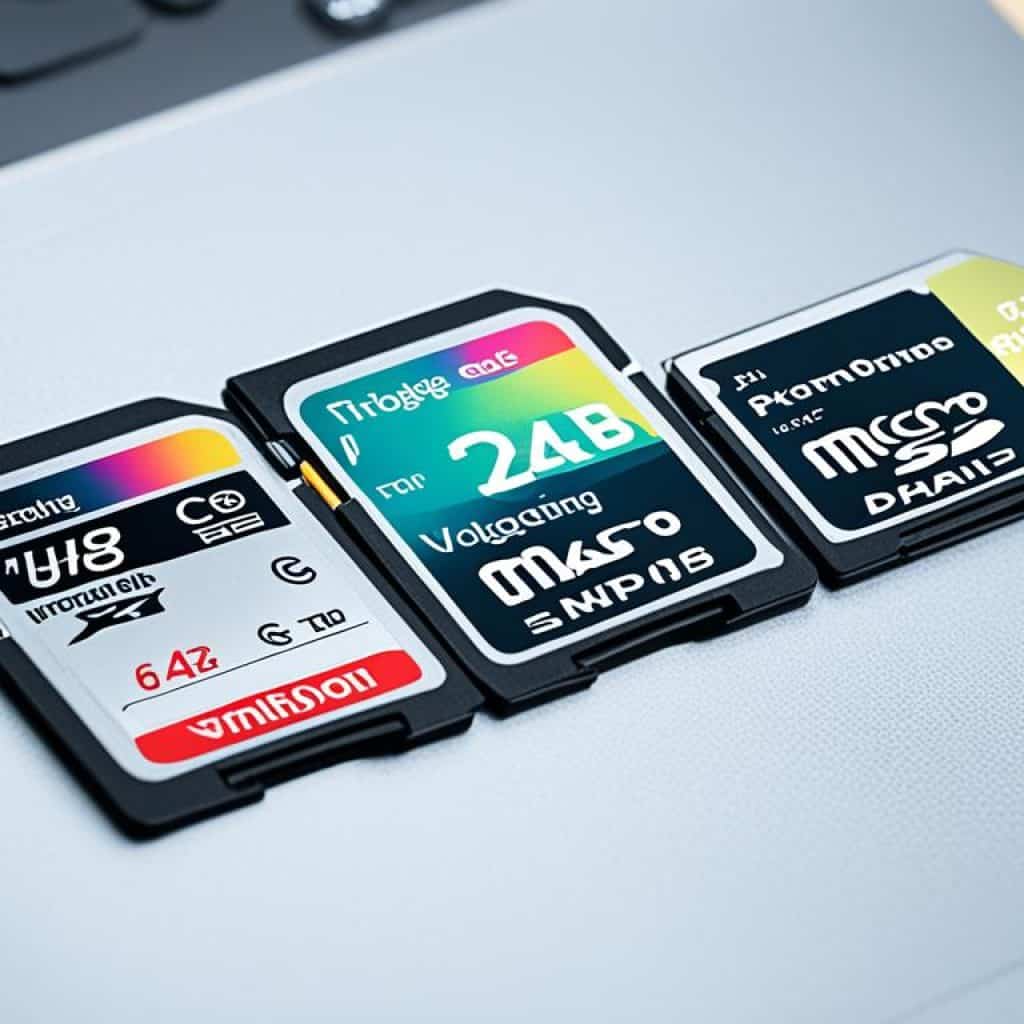
“Having the optimal capacity memory card ensures you never miss capturing those precious moments during your vlogging adventures. By considering factors like recording duration, frequency, and content resolution, you can confidently choose the right memory card that provides ample storage without running out of space.”
Remember, it’s always better to err on the side of caution and choose a memory card with a slightly larger capacity than you think you’ll need. This way, you’ll have peace of mind knowing that you have enough space to record all your vlogging content without any interruptions.
The Evolution of Memory Cards in the Digital Age
As technology advances, so does the need for storage devices that can keep up with our digital lifestyles. Memory cards have come a long way since their inception, evolving to meet the demands of modern users. In this section, we will explore the transformation of memory cards in the digital age and how it has benefited vloggers.
From SD to SDXC: How Memory Cards Have Transformed
Memory cards initially started with the popular SD (Secure Digital) format. These cards provided reliable storage for various devices, including digital cameras and camcorders. However, as the digital age progressed, the need for larger storage capacity became crucial.
This led to the development of SDXC (Secure Digital Extended Capacity) cards. SDXC cards revolutionized the memory card industry by offering significantly higher storage capacities than their predecessors. These cards can store up to a massive 2TB of data, ensuring that vloggers have ample space to capture all their high-definition videos and photos.
Modern Vlogging: The Rise of UHS-II and V90 Cards
In today’s fast-paced digital world, vloggers require memory cards that can keep up with their high-speed recording needs. This is where UHS-II (Ultra High-Speed Phase II) and V90 cards come into play.
UHS-II cards provide blazing-fast read and write speeds, ensuring smooth video capture without any buffering or dropped frames. With transfer speeds of up to 300MB/s, these cards allow vloggers to record high-resolution videos seamlessly. They are perfect for professional vloggers who demand the best performance from their memory cards.
V90 cards, on the other hand, are specifically designed for 4K and 8K recording. With a minimum sustained write speed of 90MB/s, these cards can handle the massive data flow generated by ultra-high-definition videos. V90 cards are highly reliable and ensure optimal performance even in demanding shooting conditions.
As vloggers embrace the digital age, the need for memory cards with higher capacity and faster speeds continues to grow. The evolution of memory cards, from SD to SDXC, and the rise of UHS-II and V90 cards have revolutionized the way vloggers capture and store their vlogs, delivering exceptional performance and reliability.
Memory Cards: Matching Card Types with Camera Models
When it comes to capturing memorable moments, having a reliable memory card that is compatible with your camera model is essential. Different cameras may require specific types of memory cards to ensure optimal performance and compatibility. In this section, we will explore the importance of matching memory card types with camera models and provide guidelines on how to determine the right memory card for your specific camera model.
“Using the right memory card for your camera model can enhance the overall shooting experience and ensure the safe storage of your valuable memories.”
To determine the memory card compatibility with your camera model, refer to the camera manual or the manufacturer’s website. They will provide information on the types of memory cards that are recommended or compatible with your camera. Some camera models may only support specific card formats, such as SD, microSD, CFast, or XQD, while others may offer more flexibility in the choice of memory cards.
It is important to note that the memory card compatibility goes beyond just the physical format. The camera’s firmware and hardware also play a role in determining the compatibility and performance of memory cards. Therefore, it is crucial to choose a memory card that meets the requirements and specifications mentioned by the camera manufacturer.
Here are a few considerations to keep in mind when matching memory card types with camera models:
- Check the maximum storage capacity supported by your camera model. Some older camera models may have limitations on the size of memory cards they can accept.
- Consider the speed requirements of your camera. If you frequently shoot high-resolution videos or capture fast-action shots, you may require a memory card with higher write and read speeds to ensure smooth and uninterrupted recording.
- If your camera supports features like burst mode or continuous shooting, a memory card with a fast write speed and buffer capacity is recommended to avoid any delays or buffering issues.
- If you shoot in harsh environments, such as extreme temperatures or challenging weather conditions, consider opting for memory cards that are designed to withstand these conditions, offering better durability and reliability.
By understanding the memory card compatibility requirements of your camera model and considering the specific needs of your shooting style and environment, you can make an informed decision when selecting a memory card. Remember, choosing the right memory card is an investment in the reliability and performance of your camera, allowing you to capture and preserve your vlogging adventures with confidence.
Professional Recommendations: Best Memory Cards for DSLR Cameras
Top Picks for Canon EOS Camera Vlogging
If you’re a vlogger using a Canon EOS camera, choosing the right memory card is crucial for high-quality video recording and seamless performance. After extensive testing and research, we have identified the top memory card options that are perfectly suited for Canon EOS camera vlogging.
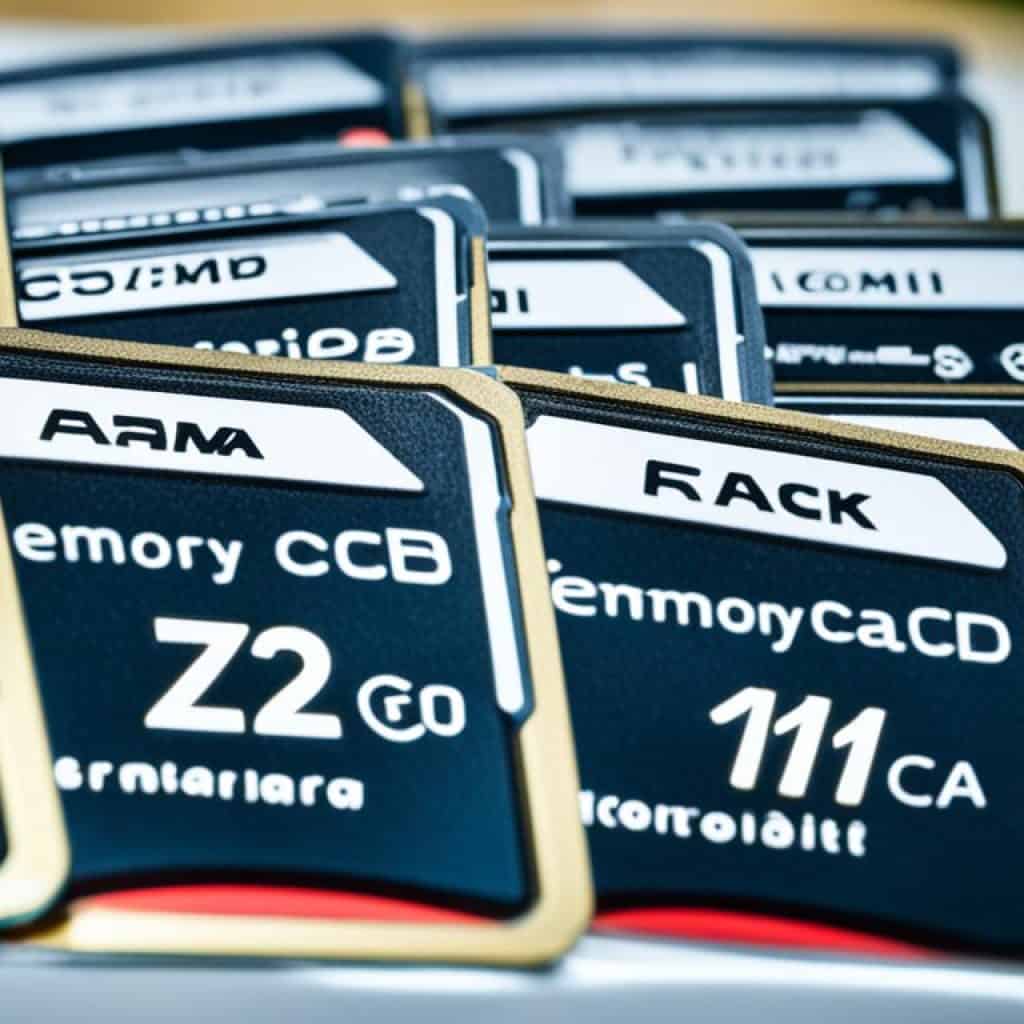
| Memory Card | Capacity | Write Speed | Compatibility |
|---|---|---|---|
| SanDisk Extreme PRO | 64GB, 128GB, 256GB, 512GB | Up to 170 MB/s | Optimized for Canon EOS cameras |
| Lexar Professional 2000x | 32GB, 64GB, 128GB, 256GB | Up to 300 MB/s | Compatible with Canon EOS models |
| Transcend SDXC UHS-II | 64GB, 128GB, 256GB | Up to 285 MB/s | Designed for Canon EOS cameras |
These memory cards offer impressive write speeds, ample storage capacities, and excellent compatibility with Canon EOS cameras. Whether you’re shooting high-resolution videos or capturing fast-action footage, these options ensure reliable performance and optimal functionality. Invest in one of these top picks to enhance your Canon EOS camera vlogging experience.
Preferred Choices for Nikon DSLR Vloggers
Nikon DSLR vloggers require memory cards that can keep up with their creative demands and provide a seamless recording experience. Based on our expert analysis, we have identified the preferred memory card choices that are highly recommended for Nikon DSLR vloggers.
| Memory Card | Capacity | Write Speed | Compatibility |
|---|---|---|---|
| Sony TOUGH | 64GB, 128GB, 256GB | Up to 300 MB/s | Optimized for Nikon DSLR cameras |
| SanDisk Extreme PRO | 64GB, 128GB, 256GB | Up to 170 MB/s | Compatible with Nikon DSLR models |
| Delkin Devices BLACK | 64GB, 128GB, 256GB | Up to 300 MB/s | Designed for Nikon DSLR cameras |
These memory cards offer exceptional write speeds, ample storage capacities, and seamless compatibility with Nikon DSLR cameras. Whether you’re capturing stunning images or filming dynamic videos, these preferred choices will deliver reliable performance and optimal functionality. Trust these options to elevate your Nikon DSLR vlogging endeavors.
Memory Card Durability: A Must for Travel Vloggers
For travel vloggers, durability is a crucial factor to consider when choosing a memory card. The unpredictable nature of travel, including rough handling, extreme weather conditions, and potential accidents, can pose significant risks to your precious footage. Ensuring that your memory card is built to withstand these challenges is essential to protect your vlogging content and avoid any unfortunate data loss.
When it comes to memory card durability, one brand that stands out is SanDisk. Known for producing reliable and robust memory cards, SanDisk offers options specifically designed for travel vlogging. Their cards are built to withstand shocks, vibrations, and temperature variations, making them ideal for adventurous vloggers constantly on the move.
An additional benefit of SanDisk memory cards is their water and X-ray resistance, providing an additional layer of protection when passing through airport security or during outdoor activities near water bodies. With SanDisk, you can have peace of mind knowing that your footage is safe from water damage and x-ray exposure.
To further ensure memory card durability, travel vloggers should also consider investing in a protective case. These cases are designed to safeguard your memory card from physical damage and provide a secure storage solution during your travels. Many memory card manufacturers offer compatible cases that perfectly fit their cards, adding an extra layer of protection when on the go.
“Travel vloggers face unique challenges that can put their memory cards at risk. Opting for a durable memory card, such as those offered by SanDisk, can provide the reliability and peace of mind needed for worry-free travel vlogging.”
When selecting a memory card for your travel vlogging needs, prioritize durability alongside other important factors like storage capacity and write speeds. By choosing a rugged memory card, keeping it protected in a dedicated case, and being mindful of handling and storage practices, you can ensure that your vlog footage remains intact, no matter where your adventures take you.
The Best Memory Cards for 4K and 8K Vlogging
When it comes to capturing high-resolution video footage in 4K and 8K, choosing the right memory card is crucial. The increased resolution requires memory cards that can handle the high data transfer rates and storage capacity needed to capture and store high-quality video content.
Ensuring High Resolution with UHS-II Cards
One of the best options for vloggers looking to achieve high resolution in their 4K and 8K vlogging is UHS-II memory cards. These cards offer exceptional read and write speeds, allowing for smooth and uninterrupted recording. With faster transfer rates, vloggers can capture every detail in stunning clarity and maintain consistent video quality throughout their vlogs.
“UHS-II memory cards provide the speed and performance needed to handle the demands of 4K and 8K video recording. They offer faster read and write speeds, ensuring high-resolution footage without any lag or dropped frames.”
Not only do UHS-II cards provide impressive performance, but they are also compatible with a wide range of cameras and devices, making them versatile options for vloggers using different equipment. With UHS-II memory cards, vloggers can confidently record their 4K and 8K vlogs, knowing that their memory cards can keep up with their creative vision.
Why Vloggers Need High-Capacity V90 Memory Cards
In addition to high-speed performance, vloggers shooting in 4K and 8K also need memory cards with high capacity to accommodate the large file sizes associated with high-resolution video. This is where V90 memory cards come into play. V90 cards are specifically designed to handle the data-intensive nature of 4K and 8K video recording, offering fast write speeds and ample storage space.
“V90 memory cards are optimized for 4K and 8K video recording, providing the necessary capacity and speed to capture and store high-resolution footage. They are essential for vloggers who want to push the boundaries of video quality.”
With a V90 memory card, vloggers can record lengthy 4K and 8K videos without worrying about running out of storage space or the card’s performance becoming a bottleneck. These high-capacity memory cards ensure that vloggers can focus on their creative process without any limitations, capturing breathtaking footage that truly showcases the power of high-resolution video.
| Memory Card | UHS Speed Class | Read Speed | Write Speed |
|---|---|---|---|
| Sony SF-G Tough Series | UHS-II U3/V90 | 300 MB/s | 299 MB/s |
| SanDisk Extreme PRO UHS-II | UHS-II U3/V90 | 300 MB/s | 260 MB/s |
| Lexar Professional 2000x | UHS-II U3/V90 | 300 MB/s | 260 MB/s |
These are just a few examples of memory cards that are highly recommended for 4K and 8K vlogging. They offer the speed, capacity, and reliability needed to handle the demands of high-resolution video recording, ensuring that vloggers can deliver stunning visual content to their audience.
Expert Tips on Maintaining Your Memory Cards
Proper care and maintenance are essential for ensuring the longevity and optimal performance of your memory cards. With the right practices, you can protect your valuable data and extend the lifespan of your memory cards. Here are some expert tips to help you maintain your memory cards:
Care and Storage Best Practices
1. Keep your memory cards clean: Avoid touching the metal contacts on the memory card to prevent fingerprints and dirt buildup. When cleaning, use a soft, lint-free cloth to gently wipe the card’s surface.
2. Protect your memory cards: Invest in a sturdy memory card case or holder to protect your cards from physical damage, moisture, and extreme temperatures.
3. Properly format your memory cards: Regularly format your memory cards using your camera or device to maintain their performance and ensure compatibility.
4. Avoid bending or flexing your memory cards: Handle them with care and avoid placing undue stress on them, as it can cause damage or data corruption.
5. Avoid exposing your memory cards to extreme temperatures: Heat and cold can affect the performance and lifespan of your cards. Store them in a cool, dry place to prevent damage.
6. Insert and remove memory cards carefully: Follow the recommended insertion and removal procedures for your camera or device to avoid damaging the card or the card slot.
Utilizing Refresh Software to Optimize Card Performance
In addition to proper care and storage practices, you can optimize the performance of your memory cards by utilizing refresh software. Refresh software helps improve the speed and reliability of your memory cards by clearing and refreshing their data, ensuring optimal performance. By using trusted refresh software tools, you can enhance the read and write speeds of your memory cards and prevent data errors.
To optimize the performance of your memory cards, consider using reputable refresh software such as Memory Refresh Pro or SpeedBoost. These tools can help extend the lifespan of your cards and improve their overall performance, making them ideal for vlogging and other data-intensive activities.
By following these expert tips on memory card maintenance, care, and storage, you can ensure that your memory cards are in top condition for capturing and storing your vlogging content. Take the time to implement these practices, and you’ll enjoy reliable performance and peace of mind knowing that your memories are well-protected.
Memory Cards Versus Integrated Storage: The Ongoing Debate
When it comes to vlogging, one of the key decisions you’ll face is whether to rely on memory cards or opt for devices with integrated storage. Both options have their advantages and drawbacks, and it’s important to carefully consider which one aligns best with your needs and priorities.
Memory Cards:
Pros:
- Expandable Capacity: Memory cards allow you to increase your storage capacity by simply swapping out cards with higher capacities. This flexibility is particularly beneficial for vloggers who need ample space for all their footage.
- Easy Data Transfer: With memory cards, transferring data between devices is a breeze. You can easily move your files from your camera to your computer or other devices for editing and backup purposes.
- Compatible with Multiple Devices: Memory cards are compatible with a wide range of devices, making them versatile and adaptable to different vlogging setups.
Cons:
- Data Loss Risk: While memory cards are generally reliable, there is always a risk of data loss. If a memory card gets damaged or corrupted, you may lose your valuable footage.
- Additional Cost: Investing in multiple memory cards of high-capacity can be costly, especially if you require a significant amount of storage for your vlogging needs.
- Physical Storage and Organization: Keeping track of different memory cards and ensuring they are properly labeled and stored can be challenging, especially for vloggers who frequently travel.
Integrated Storage:
Pros:
- Convenience: With integrated storage, you don’t have to worry about carrying around separate memory cards. All your files are stored directly on your device, making it more convenient for on-the-go vlogging.
- No Risk of Losing Memory Cards: Integrated storage eliminates the risk of losing or misplacing memory cards, providing additional peace of mind for vloggers.
- Streamlined Workflow: Having your files readily accessible on your device simplifies the workflow, allowing you to easily transfer, edit, and share your vlogs directly from your device.
Cons:
- Limited Capacity: Integrated storage has a fixed capacity that cannot be expanded, which may become an issue if you frequently record high-resolution footage or have longer vlogs.
- Data Backup Challenges: If your device fails or gets damaged, retrieving and restoring your data from integrated storage can be more complex and potentially costly.
- Incompatibility with Certain Devices: Integrated storage may not be compatible with all devices or may require specific adapters for connectivity, limiting its versatility.
Ultimately, the decision between memory cards and integrated storage depends on your personal preferences, vlogging requirements, and budget constraints. For vloggers who prioritize flexibility, easy data transfer, and expandable capacity, memory cards are the way to go. On the other hand, if convenience, streamlined workflow, and no risk of losing memory cards are your top priorities, integrated storage may be the better choice.
Comparing Memory Card Brands: Reliability and Performance Data
In the world of memory cards, reliability and performance are paramount. When choosing a memory card for your vlogging needs, it’s essential to consider the reputation and trustworthiness of different brands. This section takes a deep dive into the comparison of memory card brands based on their reliability and performance, providing valuable insights to help you make informed decisions.
Brand Reliability Surveys and Vlogger Reviews
One way to evaluate the reliability of memory card brands is through brand reliability surveys and vlogger reviews. These surveys collect data and feedback from users, highlighting the experiences and satisfaction levels with different brands. Vlogger reviews, on the other hand, provide firsthand accounts of vloggers’ experiences with specific memory card brands, shedding light on their performance and durability.
By analyzing brand reliability surveys and vlogger reviews, you can gain valuable insights into the reputation and trustworthiness of memory card brands. Look for patterns and consistent feedback regarding reliability, data transfer speed, and compatibility to determine which brands consistently deliver exceptional performance for vlogging.
Speed and Performance Tests: Which Brands Lead the Field
Another crucial aspect to consider when comparing memory card brands is their speed and performance. Speed tests and performance benchmarks provide measurable data that highlight how different brands perform in real-world scenarios. These tests assess factors such as read and write speeds, data transfer rates, and overall compatibility with vlogging cameras.
By examining the results of speed and performance tests, you can identify which memory card brands excel in terms of speed, reliability, and overall performance. Look for brands that consistently outperform others, demonstrating their commitment to quality and providing vloggers with memory cards that can handle the demands of high-resolution video recording and storage.
Ultimately, when choosing a memory card brand, consider a combination of brand reliability surveys, vlogger reviews, and speed and performance tests. This comprehensive approach will enable you to make a well-informed decision and select a memory card brand that offers the reliability and performance you need for your vlogging endeavors.
Budgeting for Memory Cards: Where to Invest in Vlogging Gear
When it comes to vlogging, investing in quality memory cards should be a top priority. These small but essential pieces of equipment play a crucial role in ensuring smooth and reliable video recording and storage. However, budgeting for memory cards can sometimes be challenging, especially when considering other vlogging gear expenses.
It’s important to remember that memory cards are not an area where you should cut corners. Opting for cheaper, lower quality cards may lead to frustrating issues such as dropped frames, data corruption, and slow write speeds. These issues can significantly impact the overall quality of your vlog content and hinder your vlogging journey.
So, where should you invest in vlogging gear? The answer is clear – prioritize your budget for high-quality memory cards. While it might be tempting to spend more on cameras or other flashy equipment, a reliable memory card is the foundation of your vlogging setup. Without it, your footage may be at risk and you may encounter problems during post-production.
To help you make smart investment decisions, here are a few tips for budgeting when it comes to memory cards:
- Set aside a dedicated budget for memory cards: Allocate a specific portion of your vlogging gear budget solely for memory cards. By doing so, you can ensure that you have enough funds to invest in high-quality options that will meet your vlogging needs.
- Consider the capacity and speed you require: Assess your vlogging requirements and select memory cards that offer sufficient capacity and write speeds. Choose a card that can handle the demands of your camera and shooting style without compromising video quality or performance.
- Do your research: Read reviews, search online forums, and consult experienced vloggers to gather insights and recommendations on reliable yet affordable memory card options. Take the time to compare different brands and models to find the best value for your budget.
- Look for promotions and deals: Keep an eye out for sales, discounts, and promotions offered by reputable retailers. Timing your purchase strategically can help you save money without compromising on quality.
Remember, your memory cards are an investment in the quality and reliability of your vlogs. By budgeting wisely and prioritizing these essential components, you can enhance your vlogging experience and create content that stands out.
How Memory Card Speeds Impact Vlogging Editing Workflows
When it comes to vlogging editing workflows, memory card speeds play a crucial role in ensuring post-production efficiency. The speed at which data is transferred and read from the memory card directly impacts the editing process, saving valuable time and enhancing overall productivity for vloggers.
Speed Considerations for Post-Production Efficiency
Fast data transfer speeds are essential for efficient post-production workflows. When editing vlogs, large video files need to be imported into editing software and accessed quickly for smooth playback. Slow memory card speeds can result in lag, stuttering, and delays, hampering the editing process and decreasing productivity.
By using memory cards with high-speed transfer rates, vloggers can significantly reduce the time it takes to import their footage into the editing software. This allows for a seamless editing experience, enabling vloggers to focus on enhancing their content without the frustration of long loading times.
In addition to fast transfer speeds, read speeds are equally important for post-production efficiency. Memory cards with high read speeds enable swift access to the footage stored on the card, allowing vloggers to navigate through their clips and make precise edits without any lag or interruptions.
Vloggers who prioritize post-production efficiency should invest in memory cards with fast transfer and read speeds. These memory cards can significantly improve the editing process, ensuring a streamlined workflow and maximizing productivity.
Choosing Cards that Complement Your Editing Software
Not all memory cards are created equal when it comes to compatibility and optimization with editing software. Different editing applications may have specific requirements or preferences when it comes to the type of memory card that works best with their software.
When choosing memory cards for vlogging editing workflows, vloggers should consider the compatibility and optimization factors for their specific editing software. It is recommended to consult the software’s official documentation or reach out to support channels to determine the most suitable memory card options.
Some editing software may recommend or require certain memory card specifications, such as minimum write and read speeds, to ensure optimal performance. By selecting memory cards that complement their editing software, vloggers can enhance their post-production efficiency and avoid any potential compatibility issues or performance limitations.
Table:
| Editing Software | Recommended Memory Card Brands |
|---|---|
| Adobe Premiere Pro | SanDisk, Sony, Lexar |
| Final Cut Pro | SanDisk, G-Technology, Kingston |
| DaVinci Resolve | Lexar, Samsung, Angelbird |
By choosing memory cards that are known to perform well with popular editing software, vloggers can effectively optimize their editing workflows and ensure a seamless post-production experience.
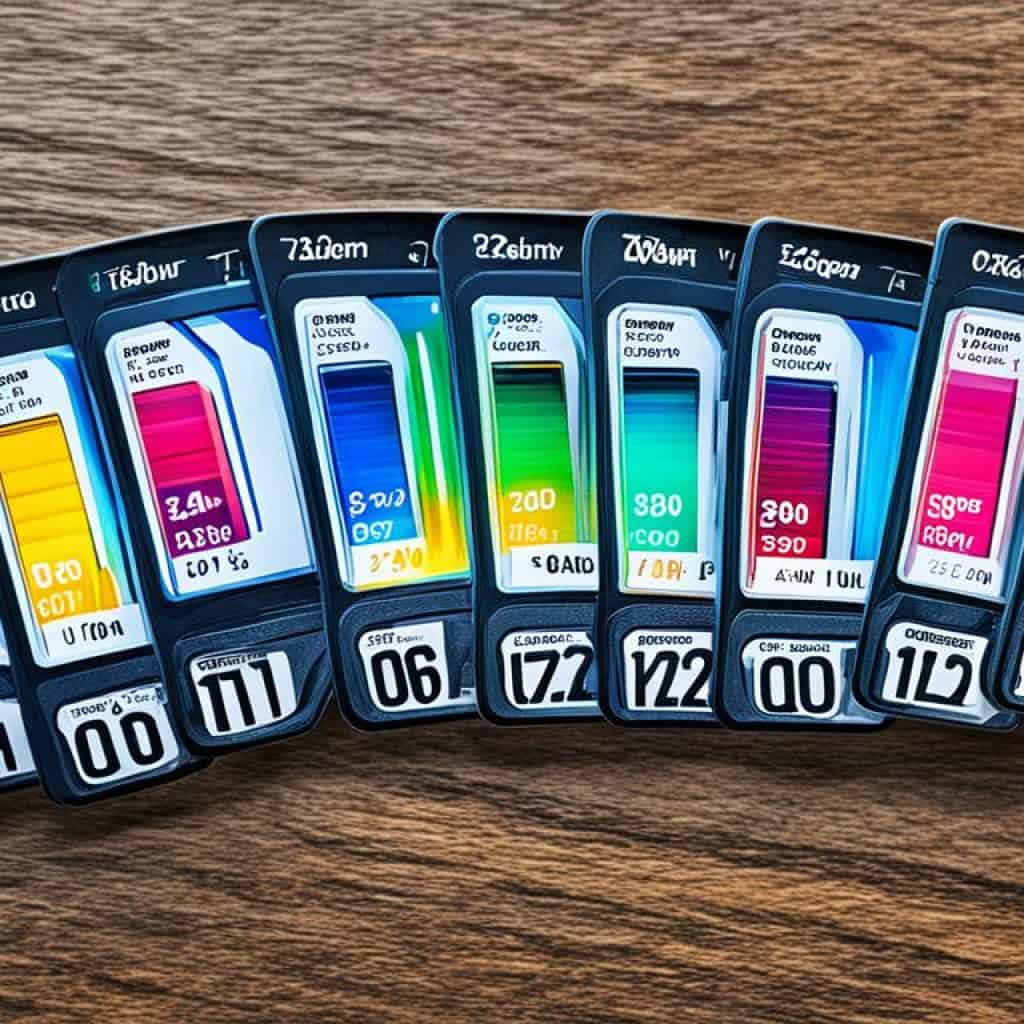
Conclusion
After considering various factors and insights into vlogging memory cards, it is clear that investing in quality memory cards is essential for vlogging success. The top performers in this category have demonstrated exceptional reliability, high-speed performance, and compatibility with different camera models and editing software.
Highlighting the Top Performers in Vlogging Memory Cards
Among the top performers in the market, brands such as SanDisk, Lexar, and Sony have consistently stood out for their outstanding memory card offerings. These brands have proven to be reliable choices, providing vloggers with the necessary performance capabilities to capture high-resolution video, deliver fast data transfer, and handle demanding vlogging workflows smoothly.
Final Thoughts: Investing in Quality for Vlogging Success
When it comes to vlogging, every detail matters. As vloggers aim to produce professional-quality content, the significance of reliable and high-performance memory cards cannot be overstated. By investing in quality memory cards, vloggers can optimize their video recording, storage, and editing experiences, allowing them to focus on their craft and deliver exceptional content to their audience.
To achieve vlogging success, remember to consider factors such as write speeds, capacity, and compatibility with your camera models and editing software. Prioritizing quality memory cards will provide peace of mind, knowing that they can handle the demands of high-resolution video recording and editing, while also ensuring the longevity and reliability required for a successful vlogging journey.
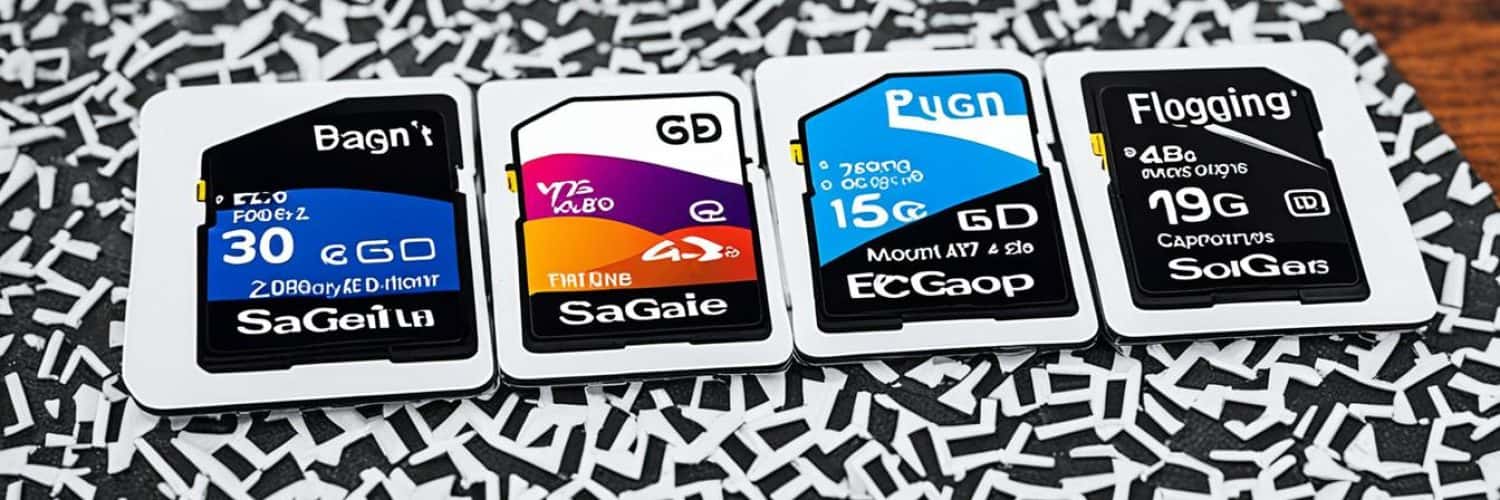


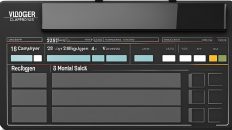























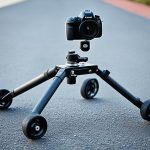

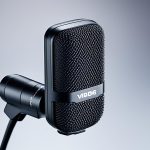












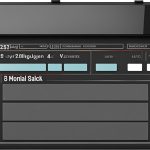








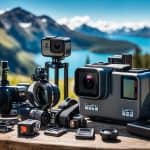




Add comment